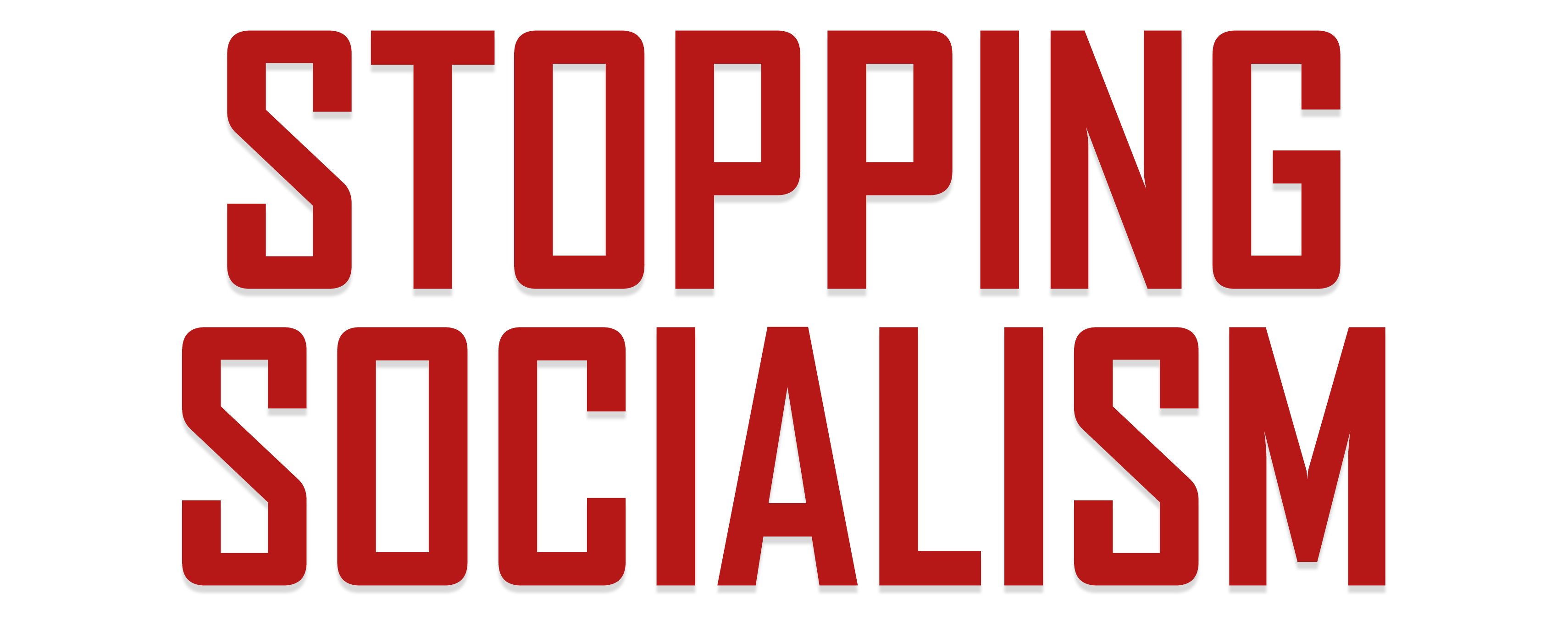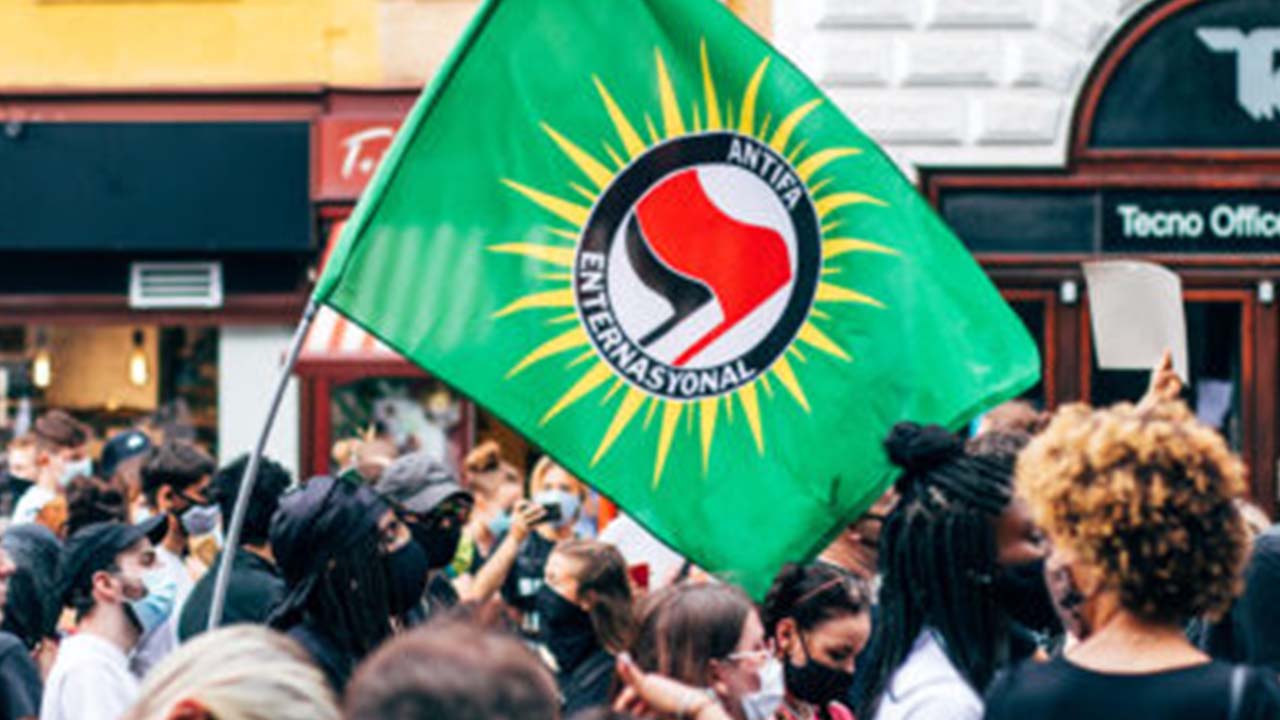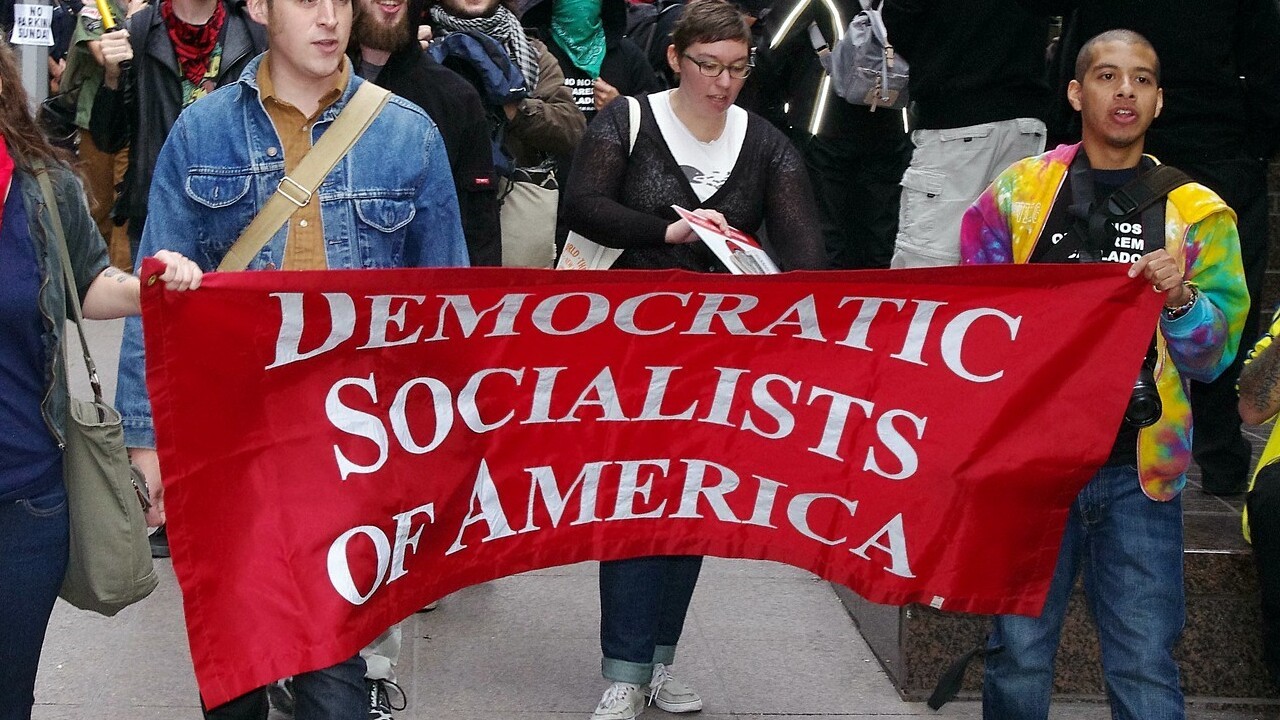Although the modern far-left movement in America claims it is “anti-fascist”–that’s the meaning of “Antifa”–there are some striking similarities between its tactics and those perpetuated by the Nazi Party during its violent rise to power in the 1920s and 1930s in Germany, including: relying on wanton street violence, erasing history, and harping on class envy and identity politics to garner political power.
Although the Nazi Party has been portrayed as a “far-right” movement by many of today’s leftist historians, the truth is that the Nazi Party was a socialist organization, and thus it belongs on the far-left end of the political spectrum. For those lacking a thorough understanding of Nazism, the name of the party should explain itself: National Socialist German Workers Party.
If you carefully and fairly examine the tactics utilized by the Nazi Party as it gained power in Germany during the 1920s and 1930s, you’ll see stark similarities used by today’s far-left groups, like those who have been in a near-constant state of rioting in Portland, Oregon for more than three months.
First, throughout the late 1920s and 1930s, the Nazi Party routinely relied on street riots, property damage, and wanton violence to achieve political power through force and intimidation. That sounds eerily similar to the events that are taking place throughout American cities by far-left groups such as Antifa. The Nazis deployed so-called “brown shirts” to act as street thugs. The modern far-left relies on violent thugs dressed in all black to accomplish the same goal.
Second, the Nazi Party was notorious for holding book-burning ceremonies and destroying what it considered to be degenerate art. The Nazi Party forbade anything in the cultural realm that did not support the party platform. Or, put another way, the Nazis used “cancel culture” to shut-down anyone and anything that did not align with its ideology, just as many on the far-left today have done in recent years.
Third, the Nazi Party preyed on class envy to stoke tension and resentment within the German population. Hitler and other Nazi leaders repeatedly blamed Germany’s economic turmoil during the 1920s on the “Junker” class, who were Germany’s equivalent of today’s so-called “1 percent.” Just as the modern Left fuels non-stop class envy by blaming America’s problems on the “evil 1 percent” and “greedy billionaires,” the Nazis blamed most of the serious problems facing Germans in the early twentieth century on wealthy citizens. (Of course, Jewish people were heavily victimized as part of this movement.)
Fourth, racial division was obviously a central component of the Nazi political strategy. The Nazi Party was arguably the most racially obsessed political party in world history. In the 1920s and 1930s, even before the Holocaust started, the Nazi Party constantly stirred up racial division, blaming various racial groups, especially the Jews, for the problems facing the wider population. Although there are very few on the Left today in America using the same kind of violent rhetoric common among Nazis, there’s no question that the modern Left has used similar tactics in the United States, blaming virtually everything on “white systemic racism” and suggesting that white people are the root of virtually every issue facing black communities.
There’s no denying that in generations past, many (but not all, of course) white people did impose laws (using the power of government) to victimize African Americans, but there’s absolutely no evidence showing that a similar kind of violent systemic racism exists today.
Fifth, identity politics was a primary weapon in the Nazi Party’s arsenal. According to Merriam-Webster’s Dictionary, “identity politics” is “politics in which groups of people having a particular racial, religious, ethnic, social, or cultural identity tend to promote their own specific interests or concerns without regard to the interests or concerns of any larger political group.” This sounds part-and-parcel to the modern Left’s strategy of slicing and dicing the population into specific identity groups, and then pushing grievance-ridden policies to placate these specific identity groups, and it was a common tactic used by the Nazis prior to and during their time in power.
Sixth, the use of propaganda by the Nazis to indoctrinate the German population is very similar to the tactics of today’s radical Left. Nazi propaganda minister Joseph Goebbels once said, “If you repeat a lie often enough, it becomes accepted as truth.” This strategy has been used with great success by the far-Left in recent years in a variety of topic areas, covering everything from the Russia collusion hoax to mistruths about climate change as an “existential threat” to humanity.
The list of frightening parallels between the Nazi Party during its march to power in interwar Germany and the Left’s quest for power in 2020 are too similar to ignore.
However, by no means is this article meant to insinuate that the far-Left has similar objectives of imposing worldwide domination via a horrific world war, Holocaust, etc. The Nazis were, of course, much worse than any popular political group or movement in the United States.
That doesn’t mean we shouldn’t acknowledge, though, that there are important commonalities between how the Nazis, a fringe, far-left socialist party, was able to rise to power in a chaotic Germany after the First World War and how similar fringe, far-left socialist groups are attempting to gain political power in the United States during the chaos of a worldwide pandemic.
Chris Talgo ([email protected]) is the editorial director and a research fellow at The Heartland Institute, as well as a researcher and contributing editor at StoppingSocialism.com.






